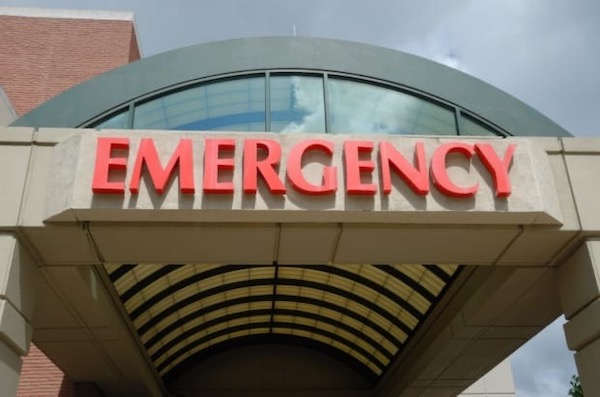Frequent flyers account for 9.4% of ER visits - Report says average length of stay was 4.2 hours

DATE: September 17, 2021
AS STATE POLICYMAKERS seek ways to slow the growth in health care costs and improve access to care, a new report by the Center for Health Information and Analysis on emergency department usage highlights some areas policymakers may want to look at.

The report, released Thursday, is the health policy agency’s first statewide report on how emergency rooms are being used. It analyzes data from 2016 through 2019, before the COVID pandemic. CHIA executive director Ray Campbell said it is meant to provide a baseline for government, health care providers, researchers, and insurers to better understand how the emergency room is being used.
The report itself did not draw any policy conclusions, but the data presented points to some areas of concern.
It has frequently been reported that a small number of health care consumers make up a large portion of health care costs, and that appears to be true with emergency department visits as well. The report found that so-called “frequent flyers” – people who use the emergency room more than 10 times in one year – accounted for 1.2 percent of patients but 9.4 percent of visits. People with Medicaid and Medicare – the poor and the elderly – were much more likely to be frequent utilizers than people who have commercial insurance. These frequent patients are disproportionately Black, and a large number of them are middle-aged (age 45 to 65). Geographically, those in Western Massachusetts were most likely to be frequent emergency department visitors.
The CHIA report did not discuss the health characteristics of these patients. Previous research has found that many frequent users tend to have chronic conditions – raising the question of whether it is possible to provide better maintenance care so they do not end up in the emergency department. Many of these individuals may struggle with mental health or substance use problems, national studies have found – again raising questions about whether improvement in the availability of mental health care or addiction treatment in the community could prevent some emergency department visits.
Another finding in the report emphasized another long-standing problem: the lack of behavioral health care that is available when someone checks into an emergency room. CommonWealth previously reported that boarding – spending days or weeks in the emergency department – has become a huge problem for children in mental health crisis during the pandemic, largely because of a lack of inpatient beds. But boarding was a long-standing problem even before the pandemic, for children and adults.
The CHIA report did not look at the issue of inpatient transfers, but it did examine the length of emergency department stays for patients who were treated then released. It found that patients who presented at the emergency room with a behavioral health condition spent far longer in the department than patients who came with physical conditions.
The average length of stay overall in an emergency room was 4.2 hours. For non-behavioral health conditions, around 30 percent of patients spent more than four hours in the emergency room. For behavioral health patients (including both mental illness and substance use disorders), 65 percent of patients spent more than four hours there.
The longest type of visit for a non-behavioral health visit was people who presented with abdominal pain, who typically stayed for 4.8 hours. On the behavioral health side, a patient with schizophrenia or another psychotic disorder stayed in the emergency department for, on average, 20 hours. Someone who tried to harm or kill themselves stayed for 19.2 hours. The numbers were also high for those with bipolar and related disorders (18.6 hours) and depressive disorders (15.1 hours).
Senate President Karen Spilka has said she intends to make improving mental health care a priority in the Senate this session. House Speaker Ron Mariano said this week that he “is anxious to work with the Senate president to continue to improve the mental health treatment that we so dearly need in this commonwealth.”
- Shira Schoenberg, Reporter, CommonWealth Magazine
Meet the Author
Shira Schoenberg, Reporter, CommonWealth
Shira Schoenberg is a reporter at CommonWealth magazine. Shira previously worked for more than seven years at the Springfield Republican/MassLive.com where she covered state politics and elections, covering topics as diverse as the launch of the legal marijuana industry, problems with the state's foster care system and the elections of U.S. Sen. Elizabeth Warren and Gov. Charlie Baker.
Shira won the Massachusetts Bar Association's 2018 award for Excellence in Legal Journalism and has had several stories win awards from the New England Newspaper and Press Association. Shira covered the 2012 New Hampshire presidential primary for the Boston Globe. Before that, she worked for the Concord (N.H.) Monitor, where she wrote about state government, City Hall and Barack Obama's 2008 New Hampshire primary campaign. Shira holds a master's degree from Columbia University's Graduate School of Journalism.
